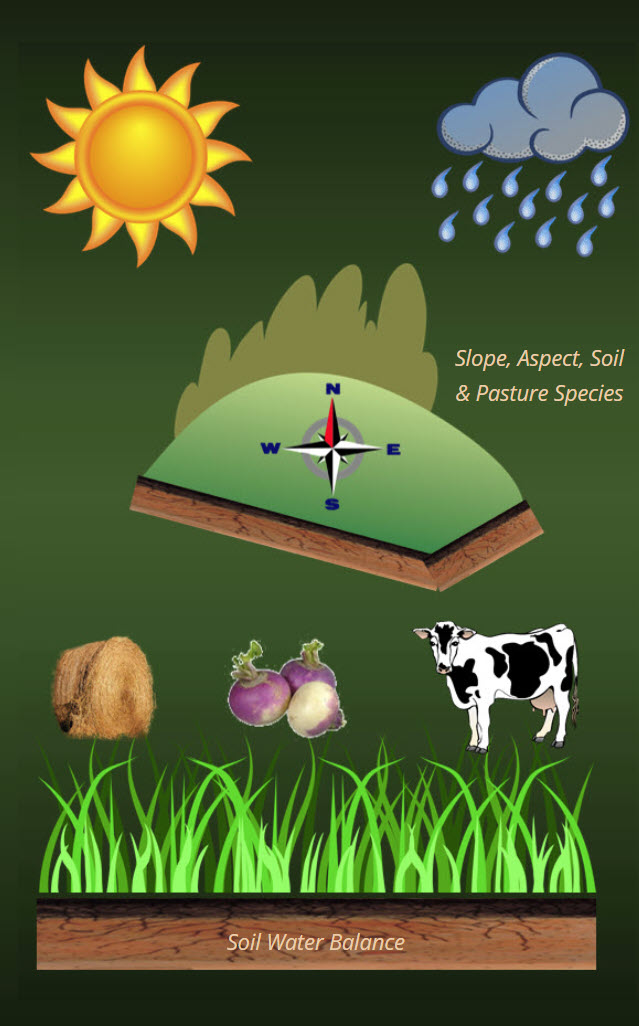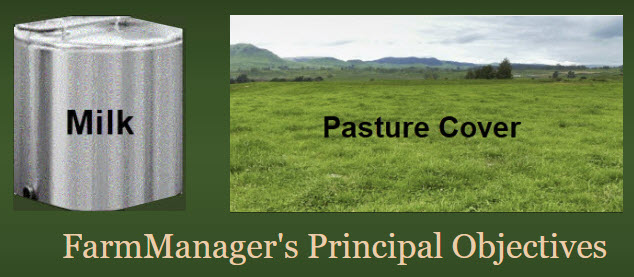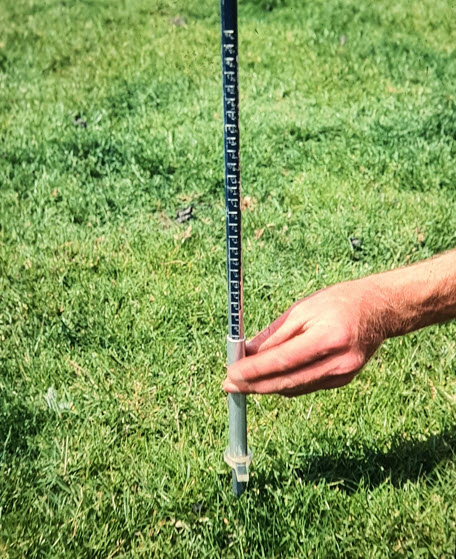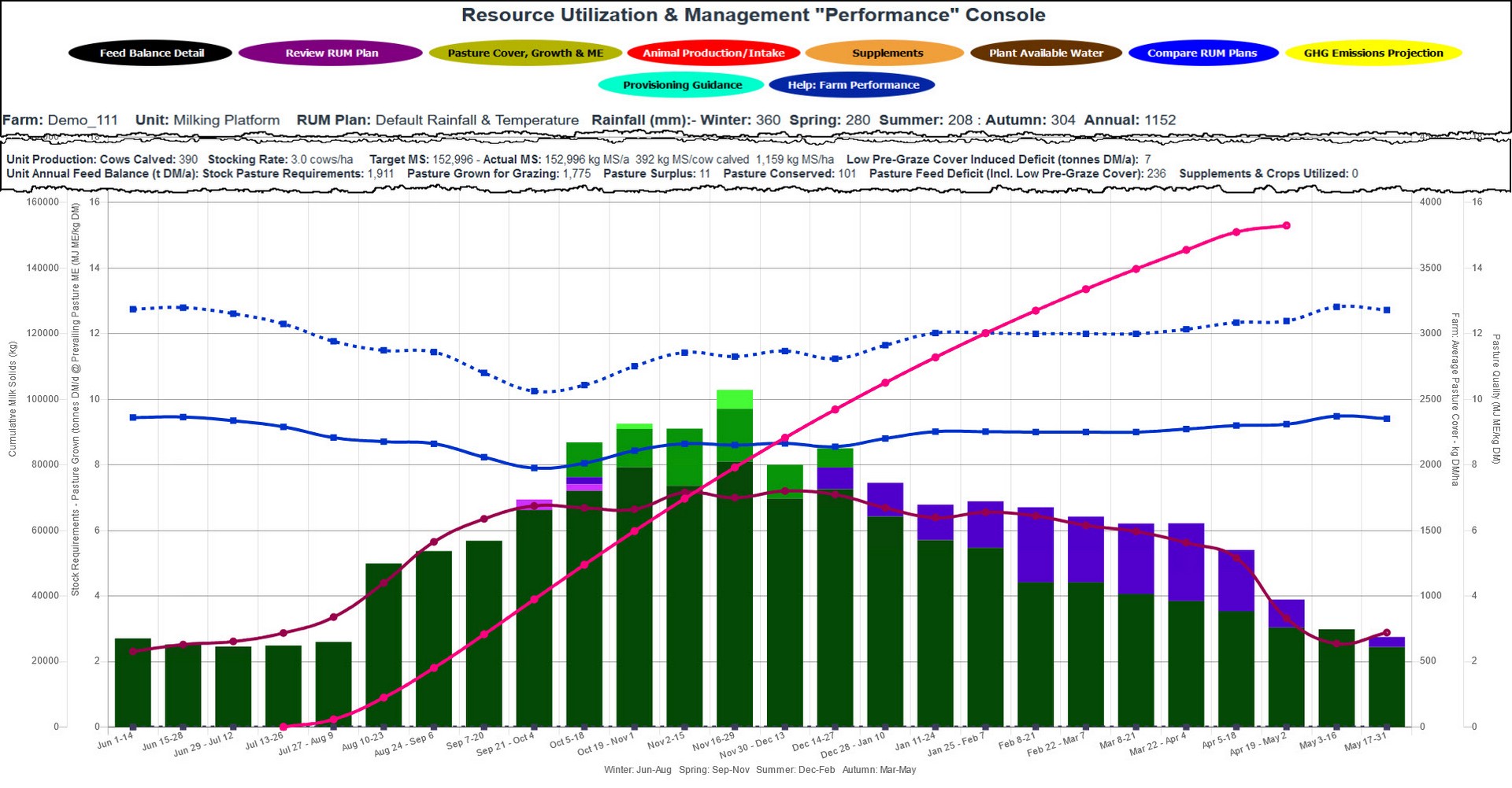


Pastoral Ecosystems, whilst seemingly simple, are in reality complex, comprised as they are of many interacting components. Moreover, as with many things in life, it takes time and hands on experience to understand how a Pastoral Ecosystem actually works, what makes it "tick".
In the years and decades gone by, the knowledge and understanding required to utilize and manage a Pastoral Ecosystem effectively and efficiently, was acquired over a lifetime on the land. Savvy farmers, when presented with an event or issue:
Where do we go from here - what do we do now;
will, more often than not, intuitively respond with a way forward, a way to address the event or issue. Whilst they may not have had personal first-hand experience of addressing the event or issue at hand, they are the beneficiaries of inter-generational knowledge, passed down to them over the years, consciously and unconsciously, both in the work place and around their family diner table.
FarmManager is an "Objectives" focused "Pastoral Ecosystem Performance Management" tool. It emulates the complex interactions of the Physical Environment (local climate, land form, slope, aspect, soils & vegetation), Available Resources, Resource Utilization & Management and the potential influence of Geo-Political and Socio-Economic views, demands and regulation, on the Performance of Grassland-Based Ecosystems.
It's focus is on provisioning stock with the feed required to realize "Stock Production Objectives", which it does by identifying and quantifying Feed Deficits. It does not emulate any aspect of a dairy cow's metabolism, simply basing feed intake upon their energy requirements.

All of the above influences, whether direct or indirect, are factored into FarmManager's algorithms, from climate through land form, pastures and soils, stock policy and farm pasture cover production objectives to geo-political and socio-economic influences on resource utilization and management.
There are many potential sources of risk (Effect of Uncertainty on Objectives) in a pastoral ecosystem, not the least of which are the vagaries of climate, provisioning, animal health, etc. In FarmManager, however, the principal threat to the achievement of "Production Objectives" is failing to provision stock with the feed they require.

FarmManager both identifies and quantifies likely/potential provisioning threats (Pasture Feed Deficits) to the achievement of production objectives. Moreover, it flags them ahead of their occurrence, which makes it possible to prepare and implement appropriate contingency/remedial measures to mitigate them, thereby integrating the management of risk into everyday on-farm resource utilization/management and decision making.
Understanding the intricacies and idiosyncrasies of provisioning feed/stock-intake flows in a timely and appropriate manner in a pastoral ecosystem, is a skill that all farmers/graziers need, if they are to successfully realize an enterprise's production objectives. For those who have inter-generational pastoral farming experience and knowledge behind them, more often than not, this is intuitive.
They Just Know.

Indeed many a Farmer/Grazier's unspoken thoughts when making a provisioning-related decision are:
"I know, that what I do today, the "Decisions" I make and the "Actions" I take, will have an impact on the performance of the pastoral ecosystem, not only today, but also tomorrow and maybe even, the far-off future! "
But, for those that do not have the benefit of inter-generation knowledge embedded in their sensory and memory banks, FarmManager can both guide and underpin their day-to-day resource utilization and management actions and decisions until, they too:
Just Know.
FarmManager's "RUM (Resource Utilization & Management) Plans" are Pastoral Farming's equivalent of the Aviation Industry's "Flight Plans". Both are Statements of Intent that incorporate:

FarmManager's "RUM Plan" Operationalizes & Executes Strategic Intent.
In most "AI" implementations, questions are framed in text-based queries whereas in FarmManager they are framed and embedded in structured "RUM Plans". This ensures that the outcome of a query is based upon and constrained by the physical environment and resource utilization/management in which a pastoral ecosystem is embedded.
Sophisticated queries can be embedded in RUM Plans, where the many components of a pastoral ecosystem can be adjusted to reflect both actual and potential circumstances, events, etc., inclusive of rainfall and temperature, either alone or in combination.
This capability makes it possible to quickly and easily, through the experience of simulating an action or management decision, to acquire knowledge and understanding of the many ways in which a Pastoral Ecosystem can respond to the environment in which it is embedded.
It could, by way of example, enhance understanding of the potential impact on "Production Objectives" of:
"Average Pasture Cover" was first used as a grazing management tool over 45 years ago in "Pastoral Ecosystem" research undertaken by the author and developer of FarmManager. The original "Sward Stick", the forerunner of the products available in the market today, was developed by the author at this time, to manage the pasture cover of experimental pastures.


This research demonstrated the influence of "Pasture Cover" (Herbage Mass) on the performance of a "Pastoral Ecosystem", and in particular the dynamics of pasture tissue flow, the grazing behaviour (pasture intake, bite size and time spent grazing) of ruminants and their productivity (milk production, live weight gain, etc.).
In the last decade or so, a general recommendations for temperate grassland "Average Pasture Cover" (APC) and "Residuals" for dairy enterprises have emerged, these being to maintain APC between 2000 and 2300 kg DM/ha and Residuals between 15-1600 kg DM/ha. The rationale underpinning the "rule of thumb" for APC being that if it is too low, cows will be underfed and if it is too high, then pasture quality and growth will decline and production will be reduced accordingly.
FarmManager provides holistic helicopter views of a Pastoral Ecosystem's Performance throughout the four seasons of a year in response to the prevailing Climate, Production Objectives, Resource Utilization & Management dictates of a RUM Plan. It presents in graphic form, the outworking of a RUM Plan's strategy to date, together with projections for both the immediate and far-off future. In doing this, it provides a forward-looking context to provisioning (Resource Utilization & Management) deliberations for today and tomorrow.

Sample text. Click to select the Text Element.